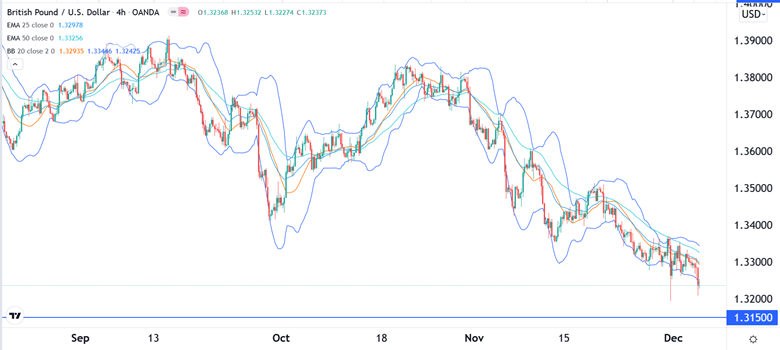Bearish View
Sell the GBP/USD and add a take-profit at 1.3150.
Add a stop-loss at 1.3300.
Timeline: 1-2 days.
Bullish View
Set a buy-stop at 1.3275 and a take-profit at 1.3350.
Add a stop-loss at 1.3200.
The GBP/USD pair is hovering near its lowest level since December 2020 as investors weigh the next actions by the Bank of England (BOE) and the Federal Reserve. It is trading at 1.3237, which is about 7% below the highest level this year.
BOE vs Federal Reserve
The GBP/USD has declined after the relatively strong economic numbers from the UK and the United States. Numbers from the two countries have showed that their economies have had a relatively strong recovery.
For example, data published by the United States on Friday showed that the unemployment rate declined to 4.2%. This means that the country is experiencing a full-employment situation, which is defined as a period when then the unemployment rate is below 5%. The country’s inflation has also risen to more than 6% and analysts expect that it rose to 6.7% in November.
The UK has also reported strong numbers lately. Its inflation rate has jumped to the highest level in more than a decade. At the same time, the economy is still adding a significant number of jobs while the unemployment rate has dropped to about 4.4%.
Meanwhile, in a statement last week, Jerome Powell warned that the Federal Reserve will start accelerating the pace of asset purchases in the coming meeting. This statement was supported by several Fed officials like Raphael Bostic and Mary Daly.
Therefore, the GBP/USD has struggled because investors don’t know what to expect from the Bank of England (BOE) when it meets next week. Before Omicron, most analysts believed that the bank will start accelerating the pace of its asset purchases in the December meeting and then start hiking in the first quarter of the year.
Now, with the Omicron variant spreading, there is a likelihood that the bank will be a bit cautious in next week’s meeting.
GBP/USD Forecast
On the four-hour chart, the GBP/USD pair has been in a major bearish trend in the past few weeks. As a result, the pair has moved below the 25-day and 50-day moving averages. It is also between the lower and middle lines of the Bollinger Bands. Oscillators like the MACD and the Relative Strength Index (RSI) have continued to drop.
Therefore, the pair will likely maintain a bearish trend, with the next target being at 1.3150, which is along the 38.2% retracement on the daily chart.

